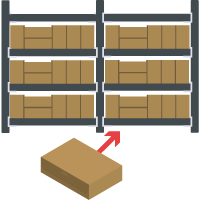Built For

Protect inventory investment & amplify supply chain visibility

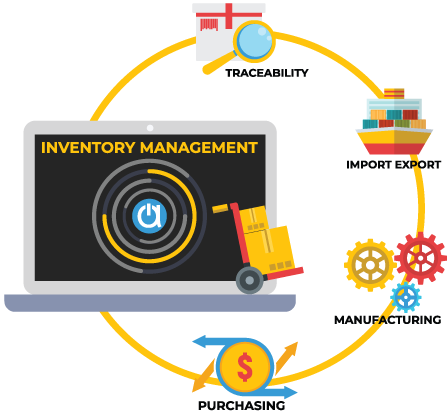
With Acctivate, full visibility into inventory translates into optimized:
Dominate product demand
As product lines expand, the customer count increases & new sales channels open, the orders pile up. With Acctivate, small businesses are empowered rather than overpowered by the volume.
Plus, they acquire features and benefits that put them in the ranks equivalent or beyond that of larger business to compete successfully without a high-priced ERP.
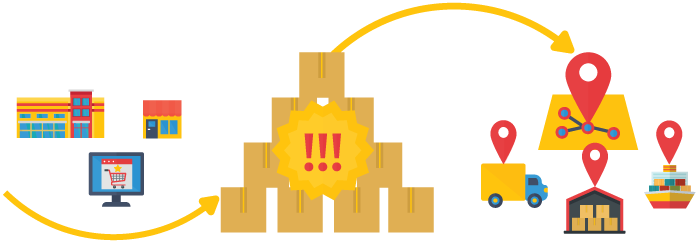
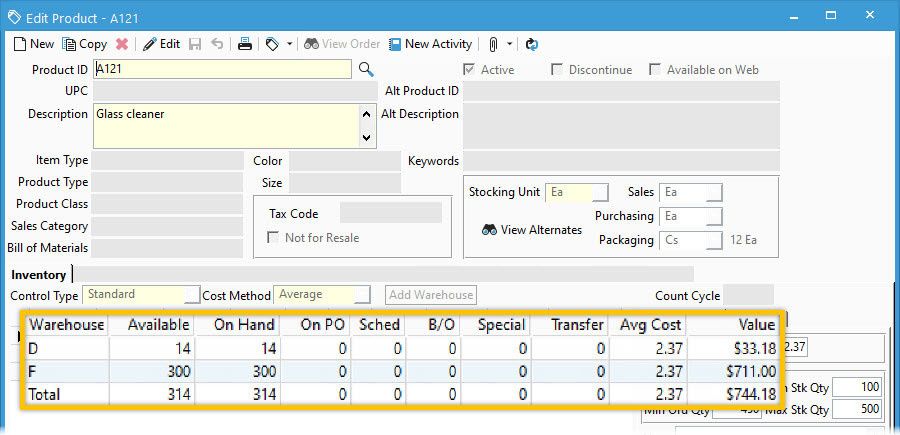
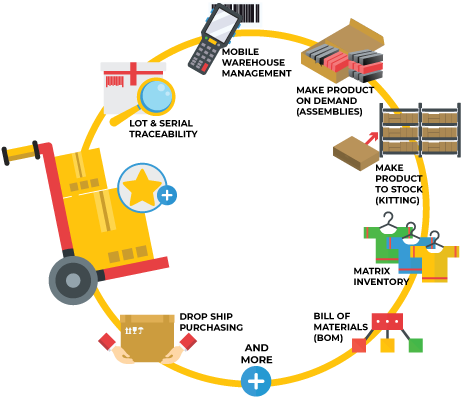
Make smarter business decisions with macro & micro data views

Find products, vendors, transactions and more instantaneously through a powerful search capability.

Access ready-to-use, filterable reports and/or create new reports with Crystal Reports integration.

View data quickly via a convenient, customizable, visual inventory dashboard.

Stay informed with a central hub for products, transactions, vendors and purchasing highlighting historical/active data & strategic insights.
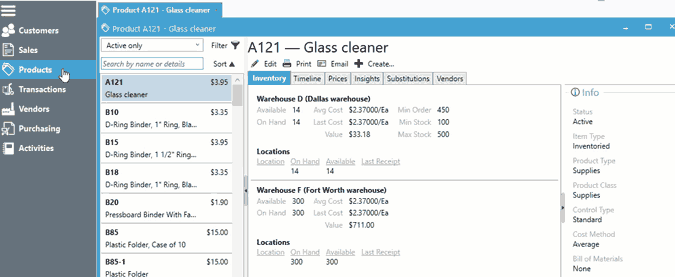
traceability
Proficient lot & serial number tracking & tracing
As product travels within the supply chain, secure peace of mind knowing its pace from origination to production to fulfillment. Be empowered to take proactive and swift, on-demand action for product recalls, quality control and other tracking needs.

Assign lot & serial numbers to an unlimited number of products; as well as down to the component or ingredient level.

Track & trace products back to suppliers, through outsourcers or to customers by lot or batch.

Manage, view & report on source, expiration date, lot, inspection and quarantine information.
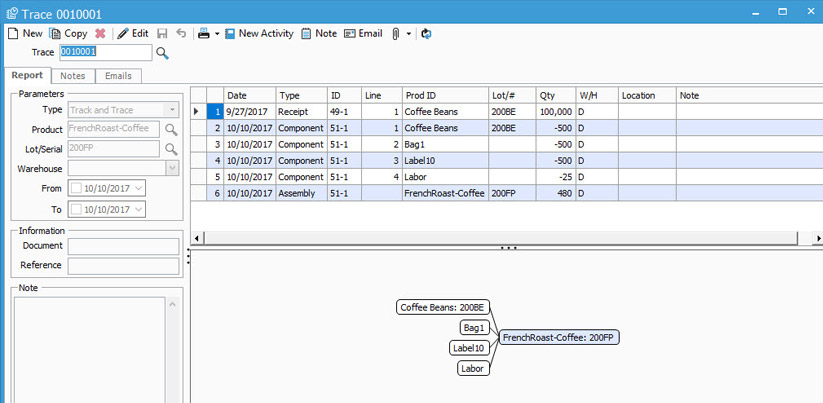
Traceability in the production process
Lot & serial number control is an overarching feature, which includes imperative data for manufacturing, e.g., recording lot/serial numbers for raw goods and tracking products from source to sale.


< 4 HOURS
importing & Exporting
Break barriers by propelling into global markets
Buy and sell globally with confidence through a dynamic and comprehensive feature set designed for success in global trade and regulatory compliance.

Landed cost for true COGS related to products sourced worldwide
Calculate true costs of goods sold with precision by automatically capturing all additional costs (i.e., duties, taxes, VAT, government fees, freight, shipping or insurance) to make informed decisions on product sourcing & profitability.
Gain flexibility with the ability to allocate landed cost across one or more transactions based on quantity, value or weight.
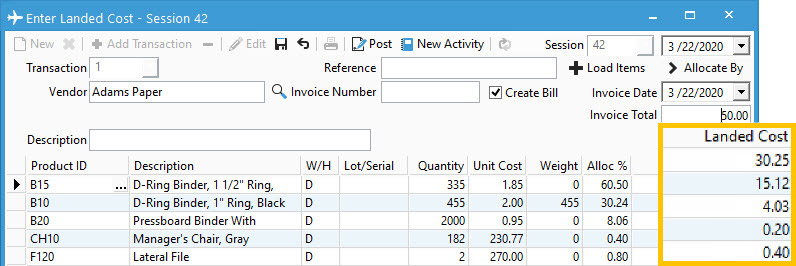
Multi-currency solution to operate seamlessly internationally
Support multi-national strategies and currency conversion with all-encompassing tools that seamlessly align purchasing, sales, pricing and credit & collections activities.


Warehouse management for imports and exports
Create and manage separate warehouses and locations, i.e., an “ocean warehouse” to monitor on-the-water containers.
Manufacturing
The epicenter for goods production
Run the production process with finesse regardless of the manufacturing method:
Accommodate any way that products are made:
Acctivate has the tools to handle it all from purchasing, product creation, selling and tracking, which includes multi-level bill of materials (BOM) and workflow management functionality.
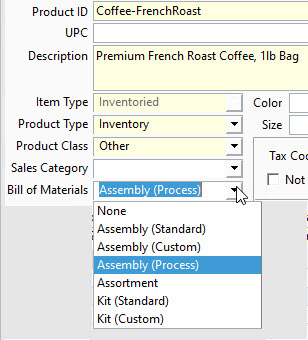

Advanced bill of materials delivers flexibility into production
An unlimited amount of raw goods and components can be defined in Acctivate to build a product as an assembly or kit.
Full control is given as the bill of materials can be updated at any time while preserving sales history for previously manufactured products; as well as assigning serial and lot numbers at the component level, end product level, or both.

3PL involvement
Acctivate coordinates effective communication with third-party logistics (3PL) for outsourcing supply chain management services, including the manufacturing of goods.

Purchasing
Strategic inventory replenishment
Preserve exact inventory levels to guarantee customer satisfaction with reliable insights (via tools, i.e., reorder alerts & inventory forecasting reports) into the what, when and who of procurement, accompanied by purchase order tools to fulfill stocking needs.
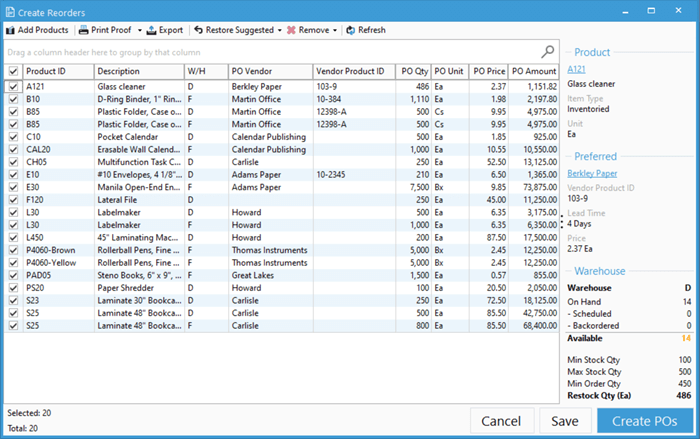

Maintain the correct quantities of inventory with reorder alerts, overstock analysis, demand reports, receivables management, and purchasing workflow.

Source quality products with forecasting and trend analysis for optimal buying decisions based on trends, seasonality, promotions & market changes.

Evaluate vendors through supplier performance analysis for better planning & spending with complete historical vendor data, i.e., vendor’s published price, last cost paid, lead time, and last receipt.

Control costs, improve margins & manage risks by knowing true product costs when comparing suppliers and uncover volume discount opportunities.

Manage drop shipments and/or special orders easily, but separately to maintain the right inventory quantities and accurate forecasting.
Call us at 817-870-1311












